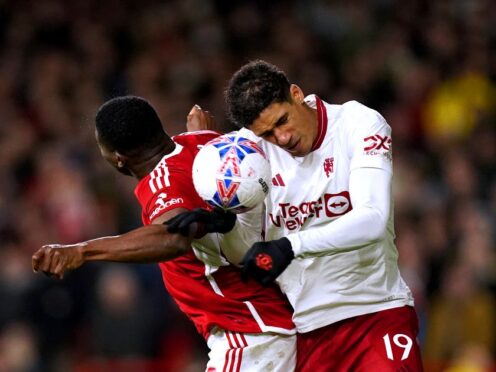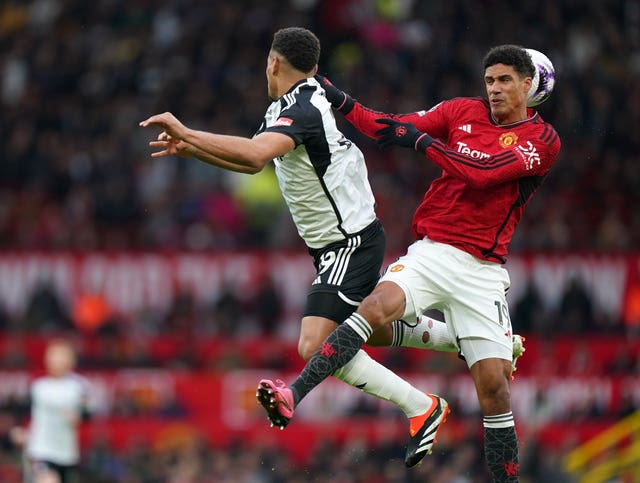
Manchester United defender Raphael Varane believes his body has been “damaged” due to effects of continually heading the ball.
Varane says that he advises his seven-year-old son not to head the ball when he plays.
The 30-year-old also revealed that he finished a World Cup last-16 game for France against Nigeria in 2014 on “autopilot” after suffering concussion.
“Personally, I don’t know if I’ll live to be 100, but I do know that I’ve damaged my body,” Varane told L’Equipe.

“The dangers of headers need to be taught on all amateur football pitches and to young people.
“My seven-year-old son plays football, and I advise him not to head the ball. For me, that’s essential.
“Even if it doesn’t cause any immediate trauma, we know that in the long term, repeated shocks can have harmful effects.”
Speaking about the Nigeria match, Varane added: “I finished the match, but I was in autopilot mode. The staff wondered if I was fit (to play in France’s quarter-final against Germany). I was weakened, but ultimately I played and rather well.
“What we’ll never know is what would have happened if I had taken another knock to the head.
“As footballers playing at the highest level, we are used to pain, we are a bit like soldiers, tough guys, symbols of physical strength, but these symptoms are almost invisible.
“If your leg hurts and you limp, everyone sees it. But with head injuries, it immediately feels weak to say that you are tired, that you have migraines or eye fatigue, so at first, we tell ourselves that it will pass.”
Football lawmakers the International Football Association Board (IFAB) announced law changes in March that include an option for competitions to introduce additional permanent concussion substitutions – something which has been trialled in the Premier League since the 2020-21 season.
But calls from leagues and players’ unions for temporary subs to allow for head injury assessments were not taken up.

Enjoy the convenience of having The Sunday Post delivered as a digital ePaper straight to your smartphone, tablet or computer.
Subscribe for only £5.49 a month and enjoy all the benefits of the printed paper as a digital replica.
Subscribe